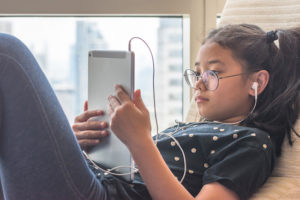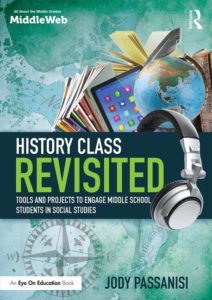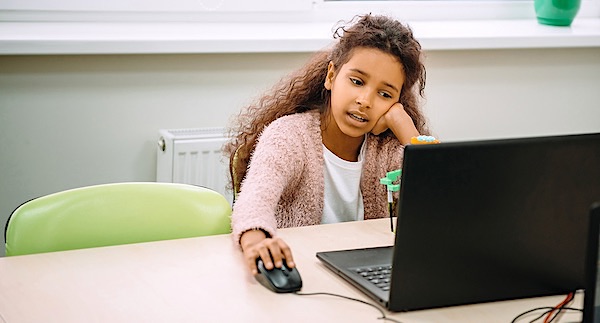7 Skills Students Need for Distance Learning
 By Jody Passanisi
By Jody Passanisi
Our students will be changed by this pandemic. No doubt. And what all the changes will look like aren’t clear at the moment.
What IS clear is that for many students across the country, and the world, learning this year will look much different.
There are systemic issues of equity. There’s the lack of resources. And even without the issues of monetary or support equity, middle grades kids are coming at this process from many different developmental places.
What I’ve compiled here are observations of student challenges – based on feedback from faculty and our amazing learning support team – that can arise during distance learning. The focus here is on skills tweens and early teens will need to learn effectively but mostly don’t have yet.
For each of the seven skills, I’ll discuss why it’s challenging and offer suggestions for work-arounds and for skill building. I’ve also included opportunities for self-reflection and goal-setting so that, as with all learning processes, our students will be able to see their growth on a continuum.
Number 1: Self-regulation
Why it’s hard:
Most of what is on this list can be chalked up under the larger umbrella of self-regulation. Arguably, it is the skill that students are not meant to completely acquire until they are much older, and we’ll need to make an extra effort to help our students adapt to the times.
In the physical classroom there are regulatory systems in place that allow kids this age to “go with the flow,” watching their peers or teachers for indications of successful behaviors.

This is pretty much what adults working from home have struggled with for the duration of the pandemic. We’re asking adolescents to perform in similar ways without the life skills – the self-knowledge that comes with time and age – and without a fully developed frontal lobe which helps us adults do these things on our own.
How we can help:
Both families and teachers can help our tweens and teens develop better self-regulation. Conversations with students need to be part of the process – helping them to delineate all the places in the day that they struggle with regulation. During one-on-one meetings with us they can set small goals for themselves, then monitor their own participation and celebrate accomplishments.
Teachers can provide structure by holding students accountable via exit cards and a product at the end of a day, class, or work period. Schools and teachers should also have specific guidelines as to what the distance learning expectations are (e.g: screens on, appropriate chat, listening, speaking, etc.) so that students know what they are working toward.
Number 2: Time awareness
Why it’s hard:

For some students, the first instance when they are really held accountable for “being on time” is when they enter the workforce or go off to college, and they begin to realize that they have to make sure they get to each class or to their job on their own.
Being able to get to a class without a physical reminder – hearing a bell or observing the behavior of others around you – is not an easy skill for elementary or middle school students, and even some high school students.
How we can help:
We can assist individual students in finding tools, whether tech or analog, that will help them know what time it is – and where they need to be when. Digital calendars, printed schedules, and other reminder strategies can help build their time skills, but the student really needs to be the driver of the process. For some students, setting alerts for when they have their classes – even creating a friend/group messaging tree – could work.
Time practice is another thing that can help students with this. Do you know without conscious thought how long it takes to do something in five minutes? They may not. Make sure that when you say “in five minutes we will do…” that you give the students five minutes (no more, no less). This will help them to internalize exactly how long that time amount is.
Number 3: It’s Not Multitasking, It’s Distraction
Why it’s hard:
Here’s another one that’s super hard for adults – and even more so for adolescents in virtual classrooms who have ready access to technology beyond what they are meant to be using – like texting, Fortnite, TikTok, Byte and other forms of play and communication.

But they haven’t developed the self-regulation (again!) that will help them monitor their focus and avoid distractions. Kids this age tend to have an inflated sense of their own abilities to multitask (as many adults do).
How we can help:
As educators, this “not paying attention” may rankle us most. We get that it’s harder for kids, but it feels crummy to see them playing a game in your own class.
It’s our job to create content that is engaging, requires active participation, and pulls students into what they are meant to be doing. Yet there are students who – for lack of a better term – can’t help themselves yet. So we need to show them the ways in which they are hindering their progress.
Middle and high school age students – who are the most likely to fall into this particular category – could be exposed to research and experiences that demonstrate the fallacy of “multitasking.”
In an integrated STEM class, for example, they might measure their own reaction times or retention rates when multitasking and not multitasking. When students figure this stuff out themselves, they are more likely to respond favorably to requests to pay attention.
Number 4: Engaging and Seeking Interaction
Why it’s hard:
For some students the pandemic, sheltering-in-place, and distance learning have caused a retreat into themselves. Maybe they feel isolated and don’t know how to reach out. Maybe things at home are difficult, and they don’t know who to turn to. Maybe (as would be completely rational during a pandemic) they are feeling anxious about what might happen at home, at school, in the world.
How we can help:
One key thing we observed when we did our distance learning prototype in the spring was the importance of everyone being seen and heard. And for those students who seemed to slip through the cracks anyway, we began keeping very close tabs on them through one-to-one contacts. We found that a data-driven monitoring system helped. Keeping a list of students who need and/or have had a one-on-one meeting with a trusted adult and then checking in with those students at regular intervals is key.
Number 5: Environment Management
Why it’s hard:
It’s not hard for everyone, but it is certainly hard for some students to keep track of their things. Teachers and families can recall the black-hole backpacks of some kids, filled with tattered permission slips and moldy apples, seemingly from years and grades gone by.
In school buildings there is more oversight, more physical structure to help organizationally challenged students, even if they aren’t naturally adept at managing their things. At home they are on their own or need family members or guardians to help. That’s a good start, but our hope is that we can also instill more independence and self-efficacy.
How we can help:
When students are doing distance learning, they benefit from creating a learning place inside their home or sheltering space. Within the confines and capacities of their own unique living circumstances, it’s important to have a corner that feels like “school.”
A small table or desk or something similar (perhaps apart from the space where they sleep or ‘hang out’) can help to differentiate between a home mindset and a school mindset. During their one-on-one contacts, teachers or advisors can ask students to walk through their learning space and then offer suggestions and tips for “school stuff” management.
For students who are not used to organizing their own school work, they may need help learning how to make folders on Google Drive, or how to color-code, or how to use another organizing tip that works for their brain. They can try something, reflect, and then try something else.
Another possibility is a design challenge for a class or advisory to solve a space or materials problem that a fellow student is having. Students might create a solution that solves one kid’s problem and then work together to help each student in the class in turn.
Number 6: Independence/Motivation
Why it’s hard:
It can be difficult to be motivated in the middle of a pandemic. School, while not perfect, is often motivating in and of itself because of the social aspects of the day. When we’re learning at a distance, some of that motivation may be missing.
How we can help:
Teachers can help by connecting what the students are learning with what is going on in the world, what they are experiencing at home, and how they can make a difference. Certainly, with families visibly struggling due to job loss and food and dwelling insecurity – and with the rise of the Black Lives Matter and Social and Racial Justice movements that have come even more to the fore these past months – our students are primed to care. Connecting what they learn to what matters now is key.
Outside the norms of physical school, we must help them “build in” community – we must build in reasons for them to rely on others in learning, as school does. Collaboration, relationships, and connection – online or in person – will be the name of the game in getting students through this…changed, but strong.
Number 7: Self-Advocacy
Why it’s hard:
For some students, advocating for themselves is a difficult task. Coming up to the teacher after class, asking for help, or pushing back against something that doesn’t feel right can be hard enough in person.
It can be even harder outside of physical school, when there are no longer those organic and natural opportunities for interaction. Students will need this skill to make sure they are getting what they need through distance learning, but they will have to build it up.
How we can help:
As teachers, educators, and families we can help students self-advocate by modeling that we want their feedback. We can provide more time and spaces for students to ask questions – and make sure there is equity and parity in the voices that are heard.
We can bring more awareness to our schedule building, so we are certain we’ve included sufficient times for students to approach us “at a distance.” We can model for students by telling about times when it was hard for us to speak up for ourselves – but we did it anyway because it was right and necessary.
We can also survey students, privately and even anonymously, so we are getting the feedback we need to be sure we are hearing what we need to hear. We can discover a lot more about improving distance learning by listening to our kids in every way possible.
That’s some of what we’re learning at our school about supporting students’ distance learning. What did we miss? Let us know your tips and tricks. As we’ve been saying to ourselves since March, this is our first pandemic and our first time experiencing the disorientation of a pivot away from “school as usual” on such a massive scale.
The same is true for you, most likely. What have you learned in recent months that helps students be their best in distance learning?

Edutopia has republished portions of this article.



































